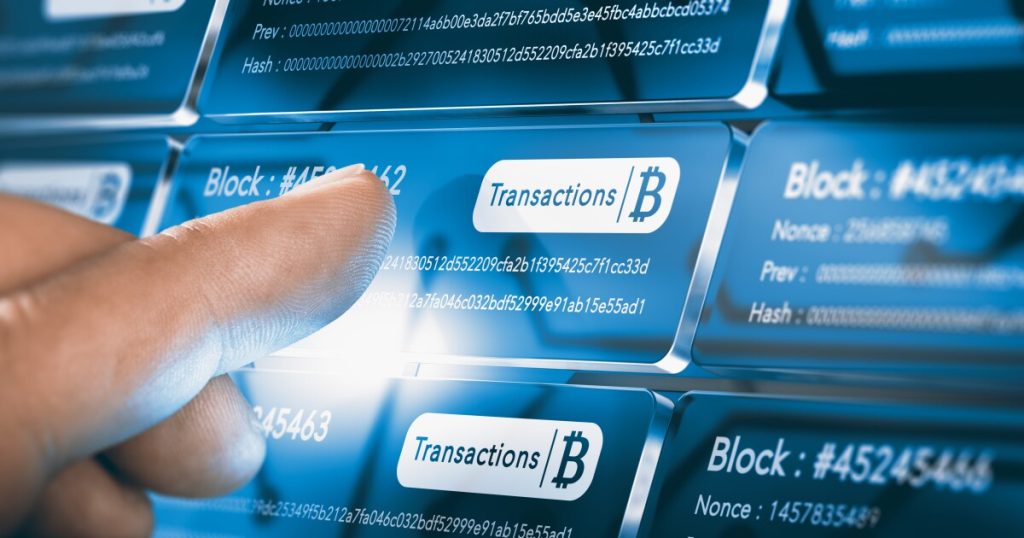Adobe Stock
The investing and finance world is undergoing a significant shift as a result of
The underpinnings of public blockchain infrastructure have experienced such substantial performance upgrades in recent years that the biggest firms in finance are more than just taking notice.
Using public blockchains such as Solana, ethereum and Avalanche, the focus has been to tokenize, or put on-chain, real-world assets, starting with stocks, bonds and regulated money market funds. But tokenization efforts have been happening so fast and expanding so broadly that soon, I expect, everything from real estate and fine art to carbon credits could be trading at scale on these decentralized networks, thanks to their unique technological capabilities, including instant settlement, composability and immutability.
Indeed, think of this technology as transforming the act of transacting itself. Under the traditional system, markets are session-based, leading to regular interruptions and geographic silos. The workday ends and so too does the ability to trade, with nothing happening on weekends and holidays. And because of the legacy account-based approach to portfolio management, the holdings of investors have been walled off from each other in ways that now seem inefficient and unfair, limiting the utility that investors can obtain from their assets.
Then there is the lingering fragmentation of markets around the world. Investors still trade as though they’re confined by the industrial era’s analogue limitations. There is still immense difficulty with, say, deploying capital from Jakarta or Johannesburg to markets in the United States, Brazil or, well, just about any jurisdiction.
Blockchains solve this by serving as a unifying digital-era layer that can provide investors around the world with real-time access to previously unreachable assets. Unlike the NYSE or Tokyo Stock Exchange, moreover, these networks facilitate transactions continuously, 24/7, on weekends and holidays, rain or shine, meaning that time-based access also is no longer a limitation.
Institutions like ours increasingly see in these systems superior tools that enable the settling of transactions within seconds instead of waiting until the end of trading days. We see more and more of the world’s payments routing through digital wallets seamlessly, compliantly and at far lower cost. And to more and more of my colleagues, we see a world of new possibilities for investment products.
Currently, traditional mutual fund transfer agents must wait for the trading day to end to calculate the fund’s net asset value, or NAV, and create the shareholder ledger. This disadvantages investors that hold capital in a money market fund for only a portion of the trading session. If an investor is in the fund for half a day but exits their position before the close, they would not receive any yield. Even those shareholders of record at the end of the trading day do not immediately get their yield. Payments are not distributed daily. Instead, the transfer agent accumulates earned interest and typically pays it out monthly and never on a weekend or holiday.
New blockchain-based offerings are solving for these limitations. Institutional investors can now trade tokenized money market funds and their transaction will settle immediately. Calculations of a tokenized fund’s shareholder record can be captured second-by-second throughout the trading day to determine which investors are earning yield, even if the investor holds their position for half a trading day or even just a few seconds.
To be clear, however, not all tokenized securities are the same, and not all tokenization technologies can enable the same functionality. With some leading tokenized security issuers, for example, the asset that sits in a user’s digital wallet is nothing more than a digital receipt. Actual ownership is still conveyed via a traditional fund share kept by a transfer agent on an old-school mainframe. Changes in ownership are not officially recorded until the off-chain ledger is updated, creating operational risks. Such “tokenized” offerings cannot convey the functionality promised by the blockchain. Buyer beware.
When the token is truly the official form of ownership and managed within the investor’s regulatory-compliant, cryptographically secured digital wallet, interest can be paid directly into these wallets by issuing fractional amounts of new tokens. That yield can be paid out every single day including weekends and holidays, which creates steadier and more reliable cash flows. Having exposure to tokenized assets in a digital wallet also provides the investor significantly more function and utility, including an ability to self-custody their tokens and transfer their holdings peer-to-peer directly. These wallets also can serve, all in one place, a wide variety of tokenized assets.
These blockchain innovations, when done right, are likely to speed up the shift from today’s account-based economy to a true wallet-based financial ecosystem. Think of these ever-more advanced offerings as a series of building blocks that will accelerate the move to 24/7 real-time global markets, allowing the industry to leave T+1 settlement and regional, session-based trading behind. More efficient financial markets, powered by unifying digital layers that operate 24/7, will free up billions of dollars in collateral held against operational risks and create new opportunities for financing and liquidity.
Indeed, I could go on and on about the technology’s benefits and the exciting new use cases we are uncovering. But suffice it to say that this push to bring investment opportunities on-chain is turning into something of an adapt-or-die race. Long-standing business models might soon get overturned, and organizations that fail to keep up better be prepared to lose business.

